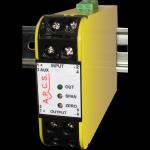 Today’s wireless music transmitter products are facing a tough environment because an ever increasing number of devices is competing for the same frequency space. The most commonly used frequency bands are the 900 MHz, 2.4 GHz and 5.8 GHz band. Traditionally the 900 MHz band has been the one that was used most often due to the low cost of products. However, that has shifted towards the 2.4 GHz band such that this band is the most crowded band. As a result, manufacturers have started to offer products in the 5.8 GHz band to avoid frequency competition.
Today’s wireless music transmitter products are facing a tough environment because an ever increasing number of devices is competing for the same frequency space. The most commonly used frequency bands are the 900 MHz, 2.4 GHz and 5.8 GHz band. Traditionally the 900 MHz band has been the one that was used most often due to the low cost of products. However, that has shifted towards the 2.4 GHz band such that this band is the most crowded band. As a result, manufacturers have started to offer products in the 5.8 GHz band to avoid frequency competition.
Regardless of which frequency band a product works in, any transmitter needs to be able to withstand a certain amount of competition. The most commonly used techniques are forward error correction and packet retransmits. Both of these techniques are only available in digital audio transmitters. FM type transmitter cannot cope well with any wireless interference. Packet retransmits are very effective but require that the wireless receiver be able to transmit data back to the transmitter. This may increase manufacturing cost. Also, products which use this technique usually are fairly limited in terms of how many wireless receivers are supported per transmitter.
Aside from these two techniques, adaptive frequency hopping is another popular protocol to help avoid interference and increase reliability. This protocol uses a hop set of frequencies which are dynamically allocated from all free frequencies. Whenever a new wireless device appears, the frequency occupied by the new device is dropped from the hop set and a new free frequency is added to the set.


